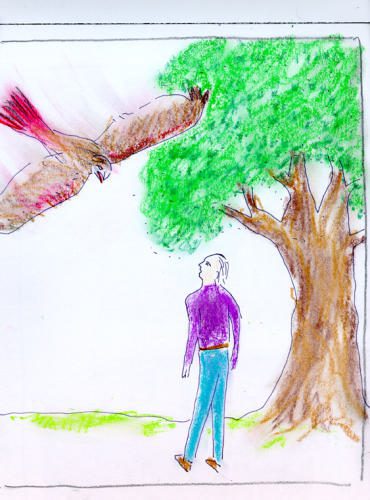 I am going to start posting some of my responses to questions on dreams and dreaming that I am constantly being asked to field. This first set of questions (from a high school student writing a paper on dreams) cover some of the basics:
I am going to start posting some of my responses to questions on dreams and dreaming that I am constantly being asked to field. This first set of questions (from a high school student writing a paper on dreams) cover some of the basics:
Q. When were dreams first noticed and studied?
A. The oldest recorded dream – the Dream of Dumuzi, part of the Innana cycle – was inscribed on a clay tablet by a female dream “reader” in ancient Mesopotamia some 5,000 years ago. Humans have been studying dreams as far back as we have records.
Q. How/ where do dreams form exactly?
A. There is no way to answer this “exactly” because there are so many kinds of dreams. While some may reflect somatic condition or routine processing of “day residue”, the interesting dreams reflect experiences that go far beyond this. They may be theatrical productions, rich in symbolism, scripted by a “dream producer” within the psyche. They may also be products of a “vigilance” function, very ancient in humans, that allows us to scout possible dangers while the body rests. For many cultures, dreaming takes us into transpersonal realms and enables us to travel beyond time and into other dimensions of reality.
Q. When where dreams first used in therapy sessions?
A. Again, this is very ancient. In The Secret History of Dreaming I give a detailed account of how for at least a thousand years (from roughly 600 BC to 400 AD) people traveled from all over the Mediterranean world in search of therapy and healing in the temples of dream healing consecrated to Asklepios, whose symbol (the serepent staff) is still the prime symbol of our medical and healthcare professions.
Q. What are some good experiences you have had when analyzing people’s dreams?
A. I’ve seen people save their jobs and their realtionships through dreamwork. I’ve seen them develop personal imagery for healing when they have learned to go back inside a dream, confront something scary and resolve it. I’ve seen them get inspiration for songs they have recorded and books they have published and for innovative solutions at work, as creative people have always done.
Q. What are some common symbols and motifs you have seen in dreams?
A. Part of the endless fascination of dreaming is that while our dreams often seem to involve universal themes and very common dream situations – bringing us alive to how we are connected to others, and to the whole human story – at the same time every dream is unique. The snake in your dream is not necessarily the same as the snake in my dream.
Q. Can you tell me anything about the process the brain goes through while a person is sleeping?
A. Recent scientific studies of the sleeping brain provide hard evidence that we all dream, every night. MRI imaging and PET scans are revealing that specific areas of the brain are triggered at intervals during the night, giving us dream imagery. While many scientists believe that dreaming is a function of REM-state sleep, when our eyes are moving rapidly under the lids, British researcher Mark Solms, in his work with brain trauma patients, has supplied evidence that dreaming also takes place in other phases of sleep, when the higher visual centers and the emotional centers of the brain are activated. According to Solms, even someone who has suffered major damage to the brainstem or the visual cortex will continue to dream.It seems that most of us – including those of us who never seem to recall a dream – are dreaming for 90 minutes to 3 hours every night, in an average of six cycles.

